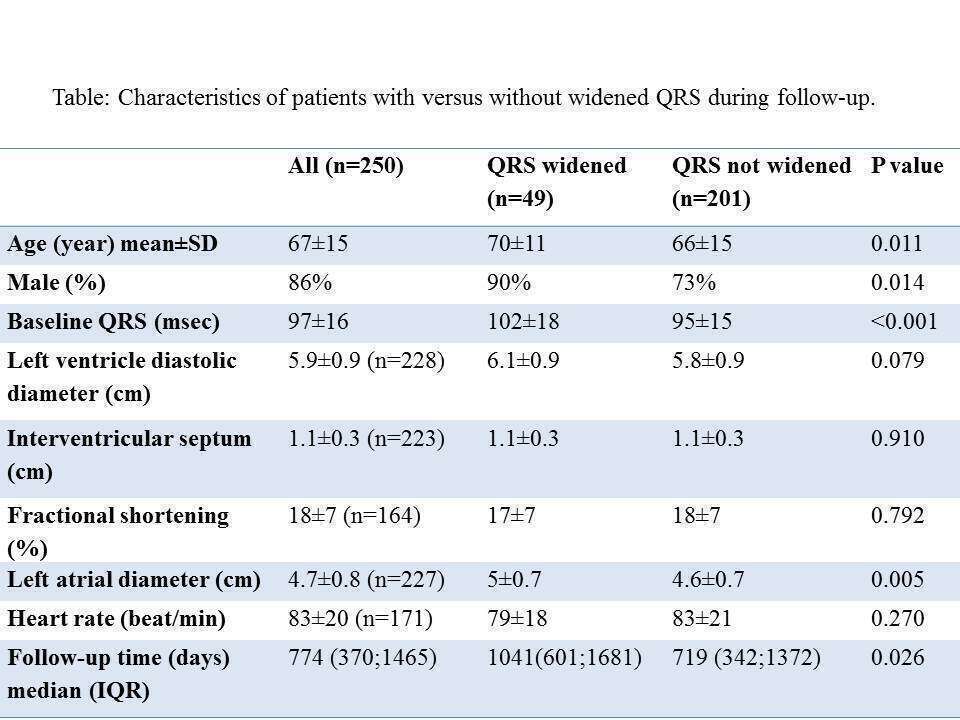Background:
Cardiac resynchronization (CRT) improves and prolongs life in patients with heart failure, reduced ejection fraction and prolonged QRS. Patients not meeting QRS criteria are usually excluded from this therapy. During follow-up QRS may prolong, and patients may become eligible CRT candidates. It is not known what percentage of patients with reduced EF prolong QRS over time and what are the predictors for QRS prolongation.
Methods:
We screened adult transthoracic echocardiograms (TTE) performed at our center between 2005-2013 for which ECG was available within 90 days of TTE (baseline ECG) and at least once 90 days after TTE (follow-up ECG). We selected patients with EF<35% (LVD) and QRS130milliseconds) on follow-up ECG were determined and their characteristics compared to those in which QRS did not widen using Mann-Whitney Test.
Results:
Total of 250 patients fulfilled inclusion criteria. Baseline ECG was performed (median, IQR) -2 (-5;0) days prior to the TTE. Patients had 13 (8;22) ECG`s during 744 (370;1465) days of follow-up. The QRS duration at baseline was 97±16 milliseconds, and increased to 109±25 milliseconds at follow-up (p<0.0001). In 49 patients (20%) QRS widened above 130 milliseconds at follow-up ECG. These patients were older, more were males and at baseline had larger left atria, a trend for larger left ventricles and wider QRS intervals (table).
Conclusions:
A significant proportion (20%) of patients with left ventricular dysfunction not fulfilling QRS criteria for CRT prolonged their QRS during follow-up. These tend to be older males with larger left ventricular and atrial sizes and initially wider QRS. Periodic reevaluation of patient eligibility for CRT using repeat ECG is advised.


